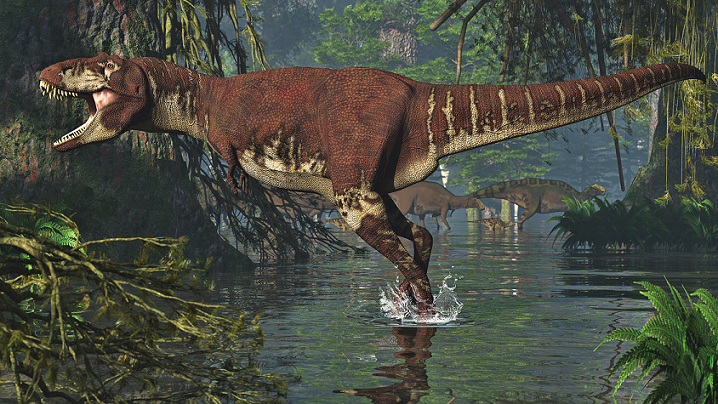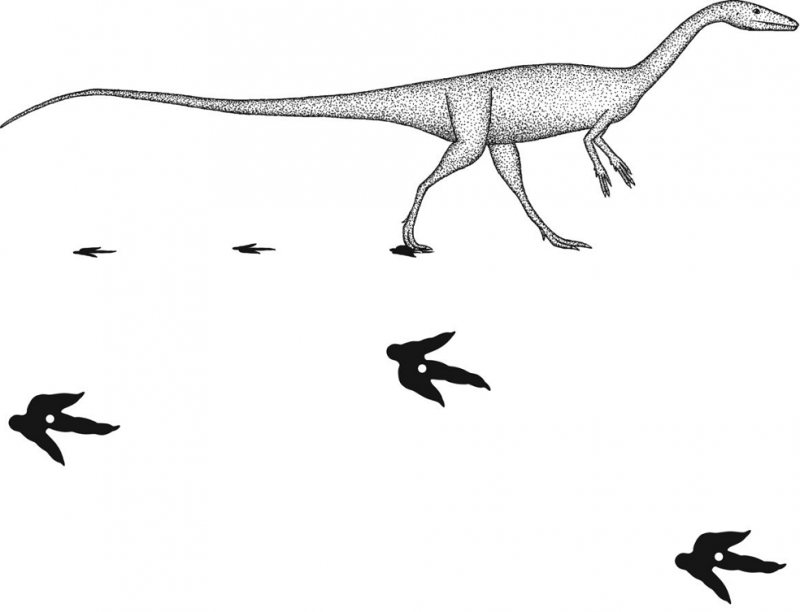Using step width to compare locomotor biomechanics between dinosaurs and modern bipeds

Remember the classic flocking scene from Jurassic Park? Alan and the kids are walking over a grassy plain. A flock of ostrich-like dinosaurs appear. Alan is amazed at how similar their movements are to a flock of birds, while the kids are more concerned that they are flocking in their direction…
How dinosaurs move is, of course, fascinating, but also provides vital clues to understanding the biomechanics of locomotion from an evolutionary perspective. A paper published in the July issue of Interface suggests that the movement of birds we see today first began evolving about 50 million years before they first appeared on Earth.
The authors studied fossil footprints left by extinct theropod dinosaurs more than 210 million years ago. Theropods, believed to be the ancestors of modern birds, include all carnivorous species of dinosaurs, like Tyrannosaurus and Velociraptor. They all walked on their two back legs, balancing the front of their body with long tails.
The fossil footprints used in the study all came from one site in Virginia, USA, and are estimated to be about 211 million years old, putting them in the Triassic Period – the early part of dinosaur history. The site is unique because the footprints were made by animals that were actively speeding up or slowing down, which meant that locomotor behaviour could be studied across a range of speeds.
The authors measured step width, or how wide the feet are spaced apart from each other during locomotion, and compared fossil measurements to measurements made from modern bipeds: humans and birds. They found that step width decreased with increasing speed in all groups, which means that as they sped up they tended to place their feet closer to the body midline.
However, whilst step width decreased gradually with speed in the dinosaurs and birds, it changed abruptly (sharp and sudden decreases) as humans switched from walking to running…

In birds and humans this type of pattern has been observed before and paints the same picture: humans have distinct walking and running gaits. In contrast, birds do not; walking smoothly transitions into running as the bird moves faster, going through an intermediate gait of grounded running, where the bird is running, but never having both feet off the ground at the same time.
This research shows that theropods displayed the same continuous locomotor behaviour as today's birds, suggesting that the unique terrestrial locomotor repertoire of modern birds started to evolve early in dinosaur history.
Lead author Peter Bishop is a self-proclaimed dino-nut:
"I have always wanted to study dinosaurs and other prehistoric animals. But I've also had a strong passion for mathematics and physics, and dinosaur biomechanics is where these fields intersect."
Commenting on future work, he said: "It would be good to find other sites of fossil theropod footprints that show them speeding up or slowing down, so we can measure different parameters to gain further insight. Also, more experimental studies on modern birds moving over different kinds of substrate, firm ground, soft mud, sloppy mud, etc., could provide more clues as to how to interpret dinosaur fossil footprints."
You'll never watch Jurassic Park in the same way again.
More information: P. J. Bishop et al. Using step width to compare locomotor biomechanics between extinct, non-avian theropod dinosaurs and modern obligate bipeds, Journal of The Royal Society Interface (2017). DOI: 10.1098/rsif.2017.0276
Journal information: Journal of the Royal Society Interface
Provided by The Royal Society


















